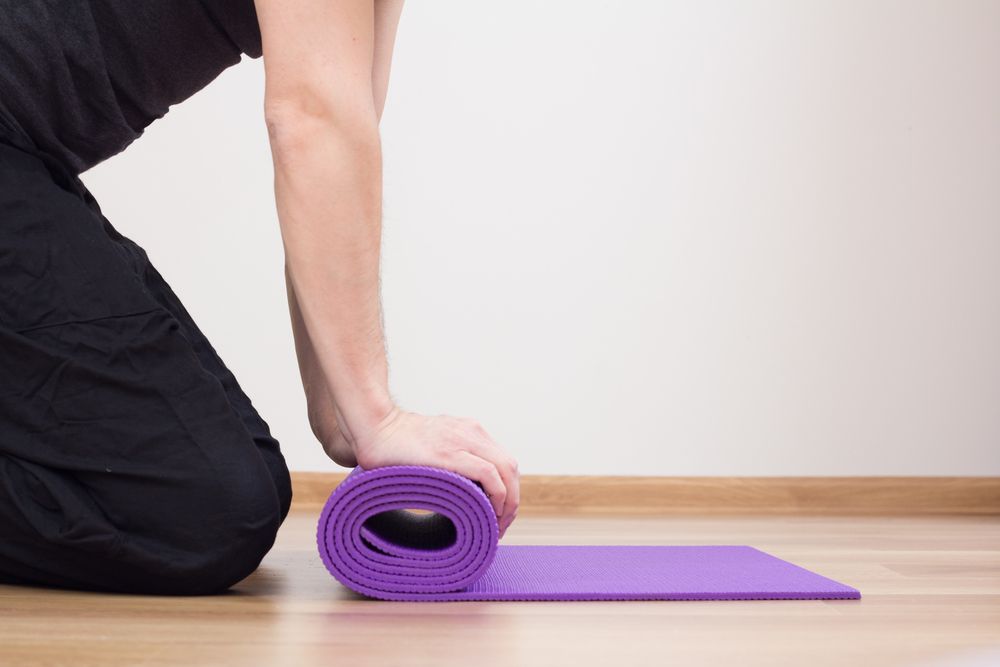Home-based Exercise Can Be Viable Alternative in PAH

Carlos Amarillo/Shutterstock
A six-month at-home rehabilitation program can help improve respiratory muscle strength and physical endurance, while promoting better quality of life, in people with pulmonary arterial hypertension (PAH)
That finding from a small clinical trial revealed benefits extending to six months after the end of the program, and suggests this training as a good alternative for people who do not have access to other forms of rehabilitation.
The study, “Effectiveness and safety of a simple home- based rehabilitation program in pulmonary arterial hypertension: an interventional pilot study,” was published in the journal BMC Sports Science, Medicine and Rehabilitation.
In 2015, the guidelines by the European Respiratory Society/European Cardiology Society (ERS/ESC) recommended tailored exercise activity as an additional therapy for stable PAH patients undergoing optimal treatment.
However, according to the ERS, more research is needed to “develop specialized rehabilitation programs, and to identify the most beneficial training models” to patients with severe chronic pulmonary hypertension, the researchers wrote.
Now, a group of researchers at the Medical University of Bialystok, in Poland, are conducting a clinical trial (NCT03780803) to evaluate the effectiveness and safety of a six-month, home-based rehabilitation program, supervised by a caregiver, for people with PAH.
A total of 39 patients with PAH were assigned randomly to one of two groups: an intervention group (16 patients, mean age 48.9 years, seven women and nine men) to perform a six-month physical training and respiratory rehabilitation program; and a control group (23 patients, mean age 53.7 years, 13 women and 10 men) with no physical training.
The training program was tailored to each participant’s clinical status. Recommendations and exercise photographs were provided to each participant in a booklet.
To ensure participants’ safety during the exercise, the intensity of physical effort was set to a level of four to five — from fairly hard to hard — on a 10-point scale. Also, the training heart rate was set at a level of 60–70% of heart rate reserve, according to the patients’ cardiopulmonary exercise testing parameters.
The training program was performed daily, for a minimum of five times per week, for a total of six months. After the first two weeks, each training session lasted 45–60 minutes.
Each session was divided into three stages: warm-up, training effort, and cool-down. The warm-up lasted from five to 10 minutes and included 15 whole-body exercises, including resistance training of the muscles used during inhalation.
The training effort consisted of interval march training, which was interrupted with one respiratory exercise every two minutes. The training session ended with a cool-down period of five to 15 minutes to avoid a sudden drop in blood pressure and heart rate.
Patients in the training group were given pedometers to measure their daily physical activity, and received a diary to record daily data on their training. Their adherence to the training program was checked via weekly telephone calls.
The study’s main goal was to evaluate whether the home-based rehabilitation program would improve patients’ endurance (assessed by the six-minute walk test, or 6MWT), quality of life (assessed with the 36-Item Short Form Health Survey and the Fatigue Severity Scale ), respiratory muscle strength, and body mass composition of patients. All parameters were evaluated when the study started (baseline), after the six months of training, and again within six months after training ended (one year total).
Results of the program
When compared to the intervention group at the start of the study, participants assigned to the control group had higher levels of N-terminal pro-brain-type natriuretic peptide (NT-proBNP), a biomarker of heart failure, as well as higher maximum exhalation and inhalation pressures, which are measures of respiratory muscle strength.
Results at six months revealed that physical training significantly improved exercise endurance, as shown by an increase in the distance walked in the 6MWT — from a mean of 436.81 meters (477 yards) at baseline, to 508.19 meters (555 yards), a difference of 71.38 meters (78 yards). The improvement was maintained six months later, with a 57.12-meter (62-yard) difference relative to baseline.
Training also significantly improved patients’ respiratory muscle strength at six and 12 months.
Oxygen saturation levels in the blood were significantly higher following the six-month training period, but returned to baseline values thereafter. Still, the intervention group reported a significant reduction in shortness of breath following the training period, which was sustained by 12 months.
Other parameters, such as arm muscle circumference and hand-grip strength, improved with training. However, these changes were not maintained after the training ended.
Quality of life improved significantly with the training program, but the improvements were not sustained for more than a year.
Adherence to the exercise program was 91.88%, which refers to the percentage of participants who completed a minimum of 120 sessions in 24 weeks.
No serious adverse side effects were reported.
Patients performed an average of 5.03 exercise sessions per week, with an avarage of 4,137 steps per session. Within one day, the total number of steps, including those taken during the training, was 11,341.
Following completion of the six-month period, patients could decide whether they wanted to continue the home-based exercise program. Two patients (13.3%) continued with regular training, five (33.3%) trained occasionally, and two participants performed only respiratory muscle exercises on a regular basis.
Overall, these results suggest that “home-based rehabilitation program is an entirely safe form of rehabilitation for stable patients with PAH who can be supervised by a family member/caregiver,” the researchers wrote.
“In summary, the present study provides key data on the feasibility of the developed home-based exercise training program and offers hope for physiotherapeutic care for patients with PAH who do not have access to other forms of rehabilitation,” they concluded.
Among the study’s limitations, the team mentioned the small sample size (a common challenge in PAH studies, they noted), and not being able to assess the control group one year after study start due to the COVID-19 pandemic.








